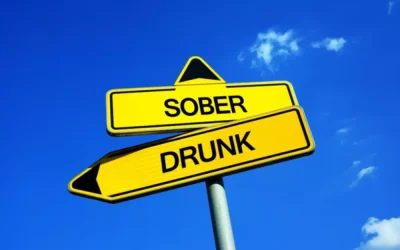Content
Our work on identifying and describing these residents with worse outcome is continuing. A sober life is always better than one spent fighting with addiction. You’ll have more clarity, focus, drive – and you’ll slowly start to build your relationships back up to go on living as a productive member of society. Smith and Clark recommend seeking out an SLH after completing clinical treatment to best practice the skills learned in the program alongside others in recovery. Think about the environment that will inspire you most in recovery – one that will keep you going and set you up for success.
- The sober living arrangement is so much more rewarding when all residents chip in and help each other.
- Although the need for alcohol and drug treatment among this population is high, very few receive services during or after their incarceration.
- Residents in sober-living homes commit to abstaining from substance use while participating in outpatient programming or after completing inpatient drug rehab.
- They can help answer any additional questions you may have about sober living and help you determine the best program for your specific needs.
- Because alcohol withdrawal can be dangerous – and even kill you – make sure you have medical advice from your doctor or a rehab facility when you decide to stop drinking.
Imagine living in a home where people used drugs and drank alcohol. What chance would someone in recovery have when facing that type of situation? Living in a house where people are drinking or using drugs is a temptation no one fresh out of an inpatient facility should have to face.
What is a Sober Living House?
We then expand on the findings by considering potential implications of SLHs for treatment and criminal justice systems. We also include a discussion of our plans to study the community context of SLHs, which will depict how stakeholder influences support and https://ecosoberhouse.com/article/mental-disorders-alcohol-use/ hinder their operations and potential for expansion. Some houses have a “residents’ council,” which functions as a type of government for the house. If you or someone you know is a recovering addict struggling to cope with sober living, give us a call today.

Our upscale residences have the same guidelines as that of a traditional sober house, but they offer residents additional amenities like massage therapists, spas, pools, private chefs, and hot tubs. A sober living home provides a safe and supportive environment for the addict or alcoholic to gradually readjust to life in the real world. They will have the structure, accountability, and sense of community that they had in residential treatment while also being able to work or go to school and experience the freedom of a normal life. Most likely, insurance will not cover this type of housing, because it is not considered a mental health treatment center. Since sober living homes are often financially independent, they usually do not accept insurance.
What Is A Sober Living House?
In addition, each sober living home has a sober house manager and support staff in place, to help keep young men and women on their paths towards sobriety. Our sober living homes also provide counseling and group meetings to help support our residents in their quest to maintain sobriety. There are also other guidelines, such as keeping things clean and being home by curfew. Failure to maintain the house rules can result in punishments ranging from paying a fine to expulsion from the house. The ultimate goal of rehab and recovery is to live and clean and sober life. Many people get out of rehab and return right back to their old lives right away including all their old temptations.
- Each program typically consists of a unique combination of therapy for addiction recovery.
- This will allow you to surround yourself with healthy relationships and avoid the toxic ones.
- When living sober, you will attract many other sober and like-minded friends (in treatment and beyond).
- Sober Living home residents are not required to have finished or be active in formal rehabilitation.
- In addition, sober living homes encourage healthy and productive living.
- In most sober-living environments, bedrooms are shared, but some do provide individual rooms.
The two types of recovery houses assessed in this study showed different strengths and weaknesses and served different types of individuals. Communities and addiction treatment systems should therefore carefully assess the types of recovery housing that might be most helpful to their communities. Transitional living during early sobriety can increase the likelihood of long-term success in sobriety. Studies have also shown that stable sober living environments can increase longer periods of abstinence, higher rates of employment, and fewer legal issues.
How Long Can You Live in Sober Living Homes?
Because alcohol withdrawal can be dangerous – and even kill you – make sure you have medical advice from your doctor or a rehab facility when you decide to stop drinking. Ethos Structured Sober Living is an all male community in recovery located in the heart of West Los Angeles. Our primary purpose is to foster long-term sobriety through the cultivation of accountability, camaraderie, & character development. Substance abuse significantly impacts users, their families, their community, and society as a whole.

If a newly sober person returns to an environment that is more destructive than conducive to recovery, they are much more likely to relapse and fall back into their old ways. For many, a month-long rehabilitation stay is not enough to establish healthy, long-term habits and goals, as they require much more time and attention to be effective. While rehab is a great place to address the underlying issues that leads one to drink or use, leaving without having a long-term plan is much like putting a band-aid on a wound that requires extensive surgery. Sober living houses are a popular choice for many people who leave rehab or detox and understand the benefits these facilities provide in establishing and maintaining long-term sobriety goals. Whatever a person’s situation, sober living homes provide an excellent foundation for positive change as people transition from inpatient treatment programs to the outside world. They provide enough structure to keep someone with a SUD on track with their recovery goals, without the intensive monitoring and regulations of an inpatient facility.
Ethos Recovery
However, this is dependent on the type of substance use disorder at hand, and NIDA also recommends longer treatment for seeing lasting positive results. The basic idea is that you shouldn’t try to get out of treatment as quickly as you can; you’re not going to see those positive outcomes if you don’t stay in treatment long enough for your specific needs. Many of us are pretty familiar with inpatient rehab at this point, and outpatient programs aren’t too hard to wrap your head around. But understanding how sober living homes work is a little bit tougher of a task for some of us. Addiction is a complex issue, and recovery is a continuous commitment.

To join a sober living house, residents must pay their own rent, which could range anywhere from $500 to $5,000 per month, depending on the location and whether certain houses include meals and other services. Residents may not have to pay for utilities at all, making housing very affordable. In our comprehensive guide, we share the truth about sober living homes, including what it is like living in a sober house and how it factors into the long-term recovery process. Halfway houses, also known as sober re-entry programs, tend to be more structured.
Risks and Downsides of Sober Living Homes
This is due to our high degree of support, programming, structure, and wrap-around clinical care. Most of the rent for the Options SLHs was paid by General Assistance or Social Security Income, so a variety of low income how does sober living work residents could be accommodated. While the level of support is less intensive (and less expensive) than that offered in residential treatment, it is more intensive than the relative autonomy found in freestanding SLHs.
- Lastly, self-efficacy is a benefit of sober living that many people who are actively drinking or using do not have.
- There are also other guidelines, such as keeping things clean and being home by curfew.
- To keep residents safe, all successful sober homes have rules and regulations that you’re required to follow.
- They first came into existence when a group of active participants in the Alcoholics Anonymous group created a “12-step” residence.